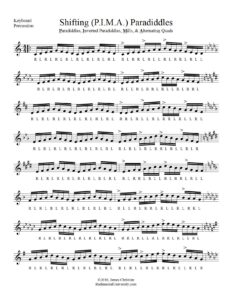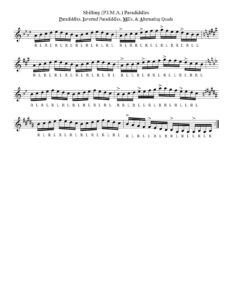Doubles Version
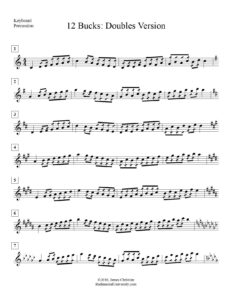
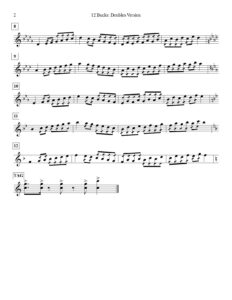
Singles Version
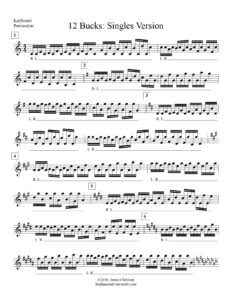
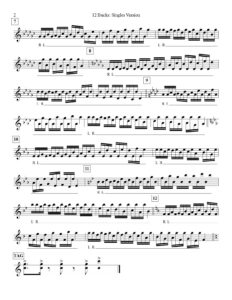
Today you get a double dose of exercises! Both versions cycle through the circle of fifths and utilize a thirds pattern, but the first version uses double strokes, and the second version uses single strokes. Both are valuable to learn, and both work important skills.
As mentioned a few days ago, all the exercises this week can be played individually or together as a full drum line. The snare part is similar to the common “Bucks” exercise, and the keyboard part cycles through 12 keys. Thus the exercise is called “12 Bucks.”
If you don’t know your scales and/or the circle of fifths very well, the main challenge on this exercise will be to switch between keys so quickly. I would recommend starting with the doubles version. You can initially learn it without the double strokes, and the technical demands will be slightly easier. It really is a great exercise for helping you know the circle of fifths intimately.
Once you get the notes down, you can add in the doubles. Then you can learn the slightly more challenging singles version. When playing doubles, make sure both notes are of equal volume. (Don’t “drop” the second note of the doubles.) When playing singles, make sure you don’t add accents when they aren’t written. With everything you play, work toward smooth, evenly spaced notes.
For more seasoned players, you may want to take the same exercises and play them with natural minor, harmonic minor, melodic minor, and/or other scale combinations.
Enjoy!

